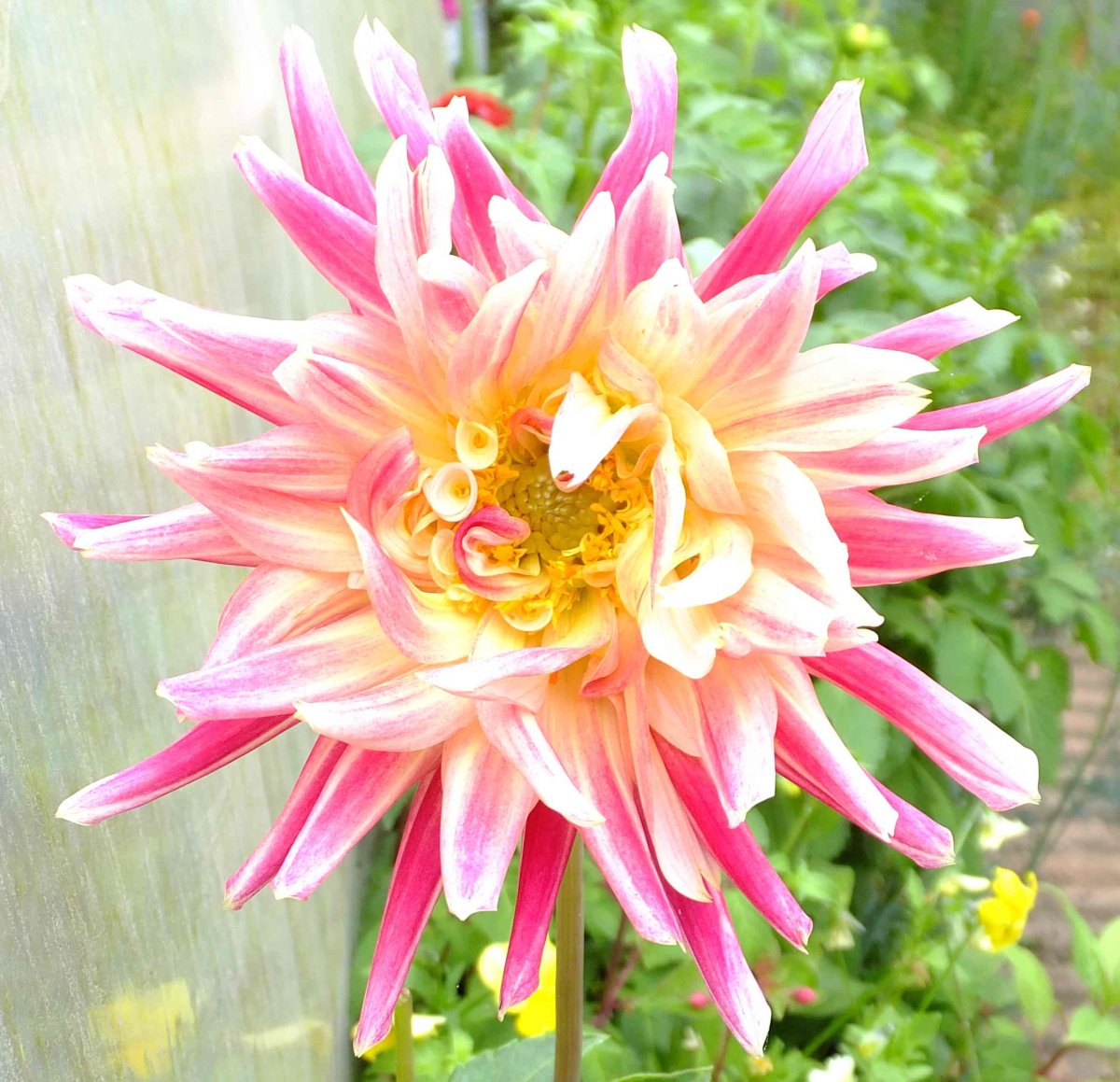
You don’t need a greenhouse to grow Dahlias but having one is an immense help especially until the frosts are over. There are Dahlias in almost every colour save blue with an almost extravagant series of sizes and sorts such as Cactus, Pompon, Peony and Ball flowered. Many of these are great for cut flowers as they have long stems. There are also smaller flowered bushier ‘good doers’ ideal for summer bedding.
Now there’s many ways to cultivate Dahlias. The simplest is planting ‘tubers’ out and leaving them just as with other herbaceous perennials. Although, a few varieties are near hardy and can be left out most winters, if they’ve been growing in light well drained soils, the majority are best overwintered under cover. This can either be as died back dried off plants in their containers of compost, or the plants evicted or dug up, dried off and stored as bunches or loose ‘tubers’ a bit like onions (these need to be dried but not totally desiccated, and in a dark dry airy place).
In spring the dried off plants in their containers can be rekindled and got growing for moving outside for summer (recommence watering initially then when they have got growing start feeding, both in with the water and with top dressings). Or you can tease apart these plants in spring and plant up each tuber in its own pot for moving out or planting out after the frosts. Likewise you can pot up loose or newly bought ‘tubers’ or even cut up tubers and plant small sections in a propagator. Or you can take over-wintered ‘tubers’ and force these with warmth in late winter so they sprout in early spring and then take cuttings or shoots from these which you then grow on (these will grow into the biggest flowered and the most vigorous plants). You can take more cuttings at almost any time as most sorts root easily. And if that’s not enough you can grow even more Dahlias from seed though not of the very choicest varieties. Of course, for very choice varieties you have to buy an initial plant but from then on you can keep the strain going for decades, and each plant multiplies every year.
Originally the Dahlia was introduced from Mexico because it increases so fast and there were hopes it would become a new food crop but it proved unpalatable and instead was kept on for its reliable and colourful flowering. Not particular as to soil or compost as long as this is moist, but well drained, then they will flower quite prolifically. Grown under cover a variety will start flowering earlier, to be followed later by plants moved or planted outdoors. Left on the plants any fading blooms need dead-heading if you wish new flowers to keep coming but otherwise they require no special treatment. Dahlias like most plants will respond to regular watering and feeding though they also cope with neglect quite well.










